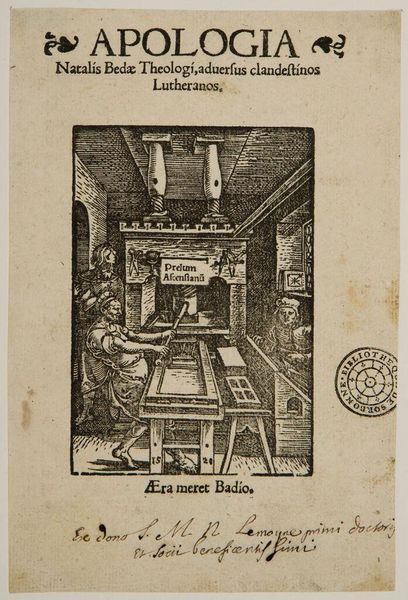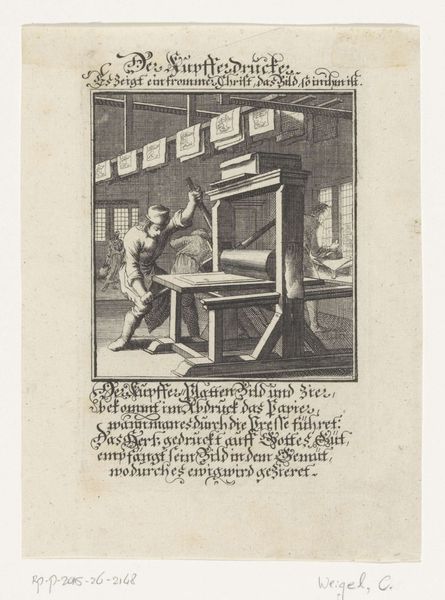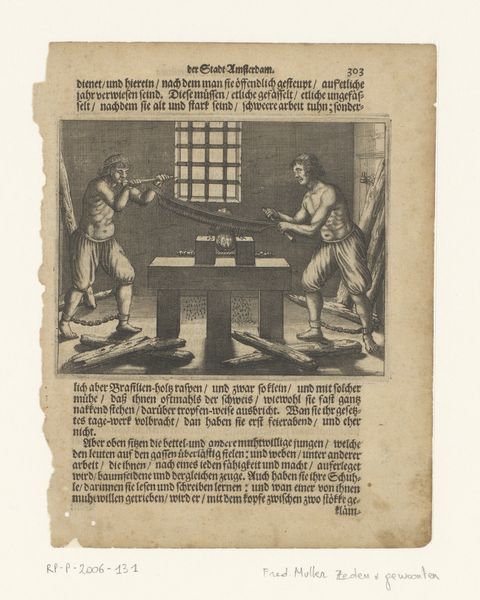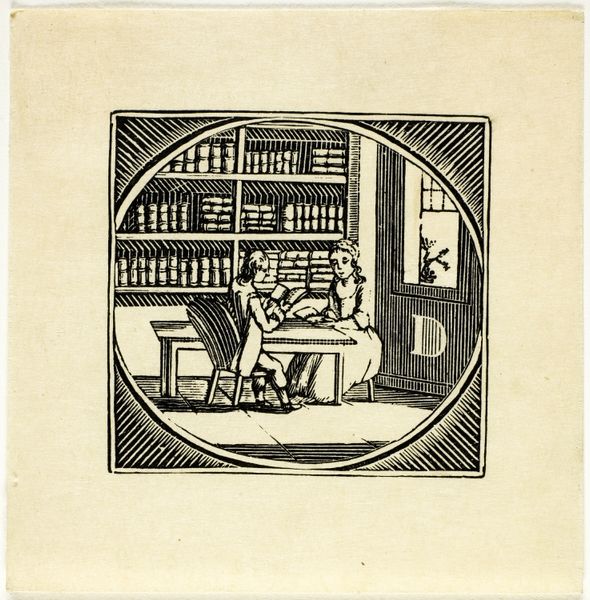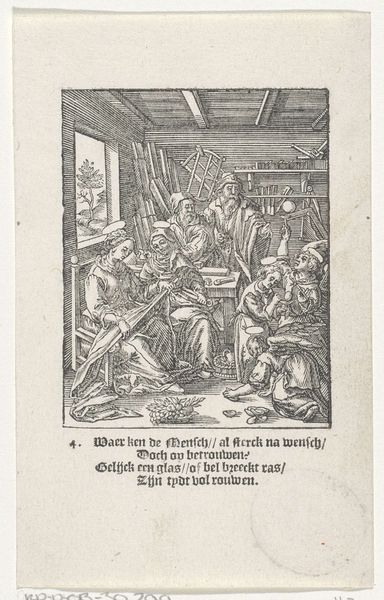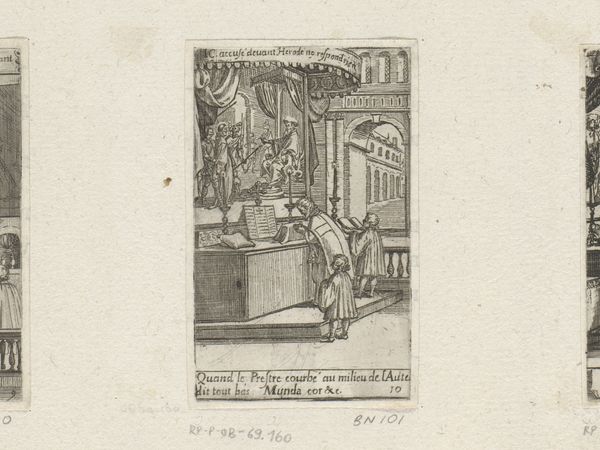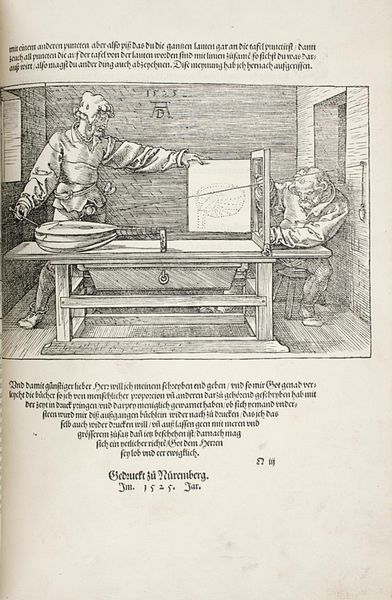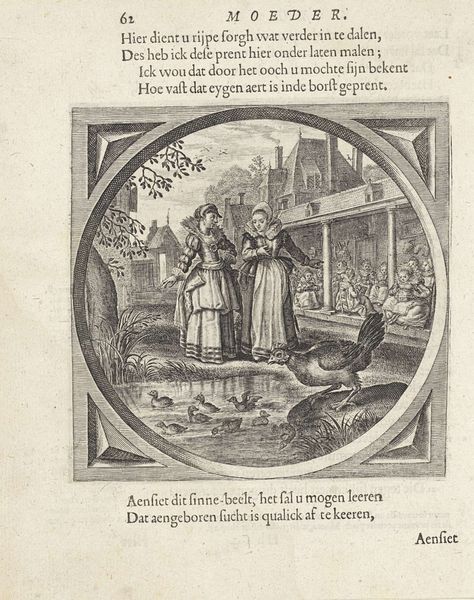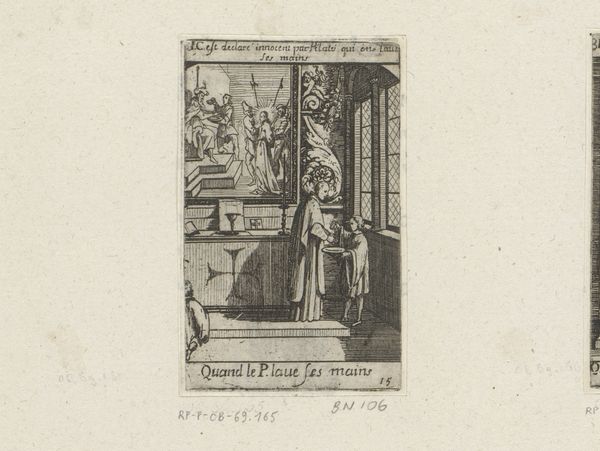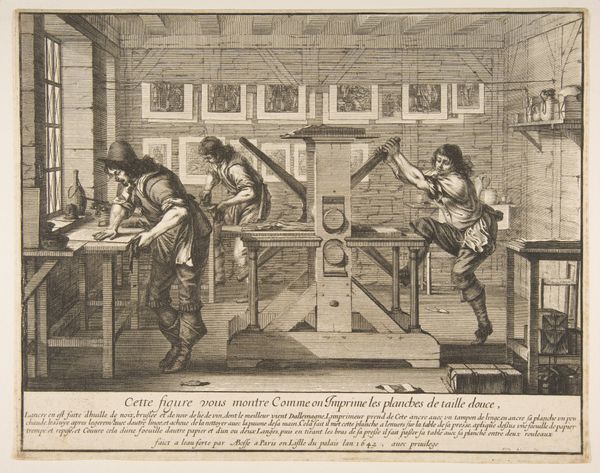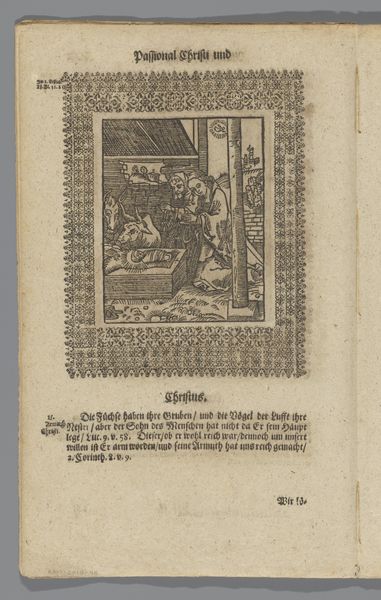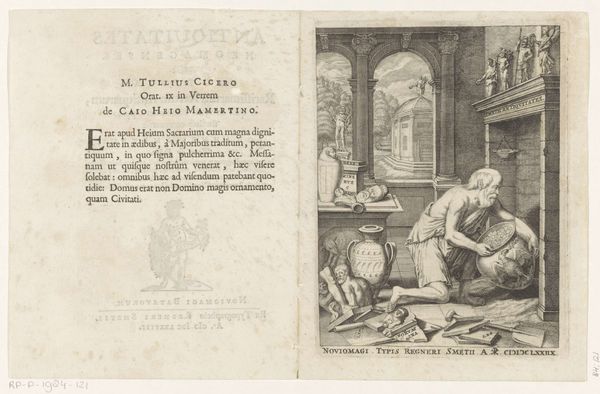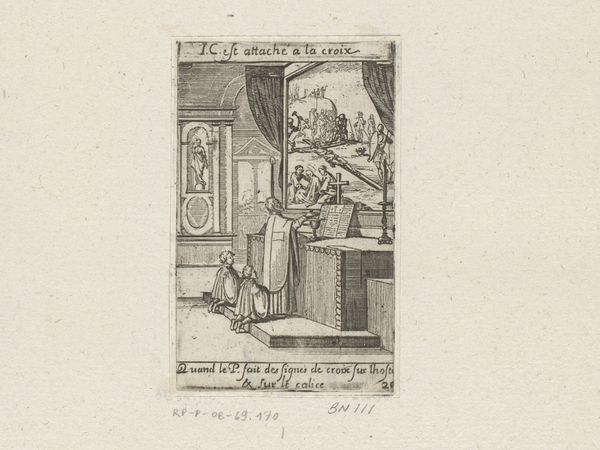
print, woodcut, engraving
# print
#
figuration
#
woodcut
#
line
#
genre-painting
#
northern-renaissance
#
engraving
#
realism
Dimensions: height 79 mm, width 61 mm, height 148 mm, width 88 mm
Copyright: Rijks Museum: Open Domain
Curator: We're looking at "Boekbinder," a woodcut print by Jost Amman from 1568, currently held at the Rijksmuseum. It depicts a 16th-century bookbinder's workshop. Editor: My first thought is that it’s wonderfully detailed! It offers such an intimate look into this craft. There is a sort of comfortable airiness here; it feels industrious but not frantic. Curator: Amman clearly aims to document the tools and processes involved in bookbinding. Note the array of tools hanging on the wall. The detailed representation of the book press itself emphasizes the labor and skill involved in producing books. It is all rather process-focused, don't you think? Editor: Yes, but the print also taps into a rich vein of symbolism related to knowledge and craftsmanship. Books, even then, were powerful objects, vessels of ideas. The bookbinder becomes more than just a craftsman; he's a guardian of those ideas. See how carefully they are arranging each piece with care? Curator: And in producing that care, consider the implications of the print itself. Woodcuts were a relatively accessible means of mass production at the time. How interesting that this is distributed widely by the very methods depicted within. It really forces us to rethink our definitions of art. Editor: It does raise fascinating questions. The repetition of the circular window panes feels symbolic, almost like countless eyes observing the bookbinding process, adding to this impression of widespread ideas. It reinforces this print not just as a visual depiction, but also one imbued with rich meanings beyond the practical concerns of labor. Curator: It pushes our understanding of art away from pure aesthetics to see it as an industry or production. By considering this work through the lens of its creation, distribution, and materiality, we gain a clearer insight into both production and consumption. Editor: Seeing those themes unfold within this workshop view, the viewer is invited into that shared labor in a unique fashion. It transcends just a simple depiction of making books. I now see the act of preserving knowledge as a deeply meaningful tradition. Curator: Precisely. So much more than mere artistry, then! Editor: Absolutely! I was ready to pass this one off due to its utilitarian presentation, but I've gained an understanding that art can convey very specific symbolism regarding knowledge itself.
Comments
No comments
Be the first to comment and join the conversation on the ultimate creative platform.
